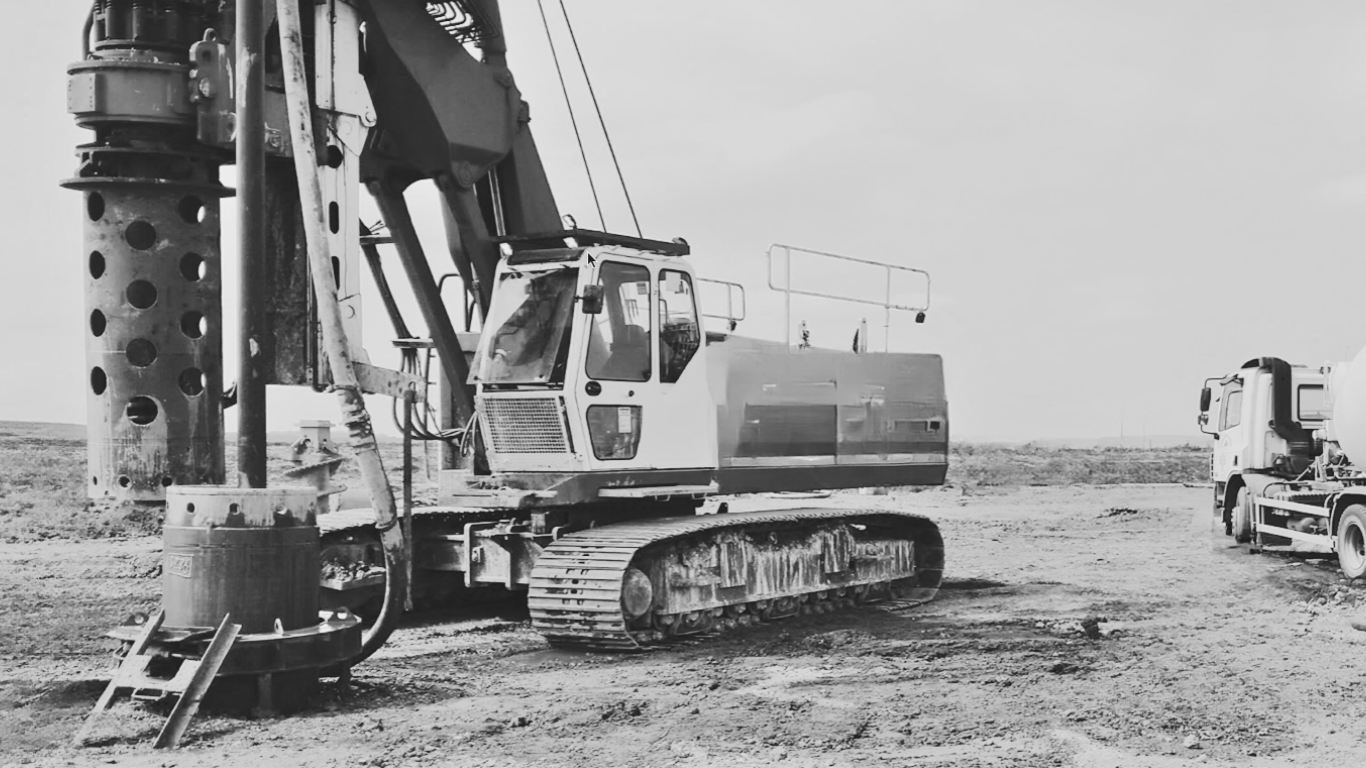
BORED PILING
Bored Piling: Revolutionizing Foundation Construction
Bored piling, also known as drilled shafts or cast-in-drilled-hole piles, is a foundational construction technique widely utilized in civil engineering and construction projects. It involves the drilling of cylindrical holes into the earth, which are then filled with reinforced concrete to create sturdy, load-bearing foundations. This method is employed when soil conditions are unsuitable for conventional shallow foundations or when substantial structural loads need to be supported.
Bored piling is a specialized technique used in construction to create deep foundations for buildings, bridges, and other structures. Unlike shallow foundations, which rely on the bearing capacity of the upper soil layers, bored piles are installed deep into the ground to transfer structural loads to stronger, more stable strata below the surface.
Advantages of Bored Piling:
Versatility: Bored piling is highly versatile and can be adapted to various soil conditions, including cohesive soils, non-cohesive soils, and rock formations. This flexibility makes it suitable for a wide range of construction projects, from high-rise buildings to bridges and industrial structures.
Increased Load Capacity: One of the key advantages of bored piling is its ability to support heavy structural loads. By drilling deep into the earth and utilizing reinforced concrete, bored piles can withstand significant vertical and lateral forces, ensuring the stability and longevity of the structure.
Minimal Environmental Impact: Unlike some foundation methods that require extensive excavation, bored piling minimizes disturbance to the surrounding environment. The drilling process produces less noise, vibration, and soil displacement, making it an environmentally friendly option for construction projects in urban or sensitive areas.
Suitability for Limited Access Sites: Bored piling is well-suited for construction sites with limited access or overhead obstructions. The drilling equipment can be mobilized to confined spaces, allowing for efficient foundation installation in challenging environments where other methods may be impractical.
Consistent Quality Control: The use of reinforced concrete in bored piling ensures consistent quality control throughout the construction process. By closely monitoring the drilling parameters and concrete placement, engineers can maintain strict adherence to design specifications, resulting in reliable and durable foundations.
Cost-Effectiveness: While bored piling may involve higher initial costs compared to shallow foundation techniques, it offers long-term cost savings by providing robust foundations that require minimal maintenance over the lifespan of the structure. Additionally, the ability to customize pile dimensions and spacing optimizes material usage, further enhancing cost-effectiveness.
In summary, bored piling is a versatile, reliable, and cost-effective foundation solution that offers numerous advantages for construction projects of all scales. Its ability to accommodate various soil conditions, support heavy loads, and minimize environmental impact makes it an indispensable technique in modern civil engineering and construction practices. By leveraging the benefits of bored piling, construction projects can achieve superior foundation solutions tailored to their specific needs and geological conditions.